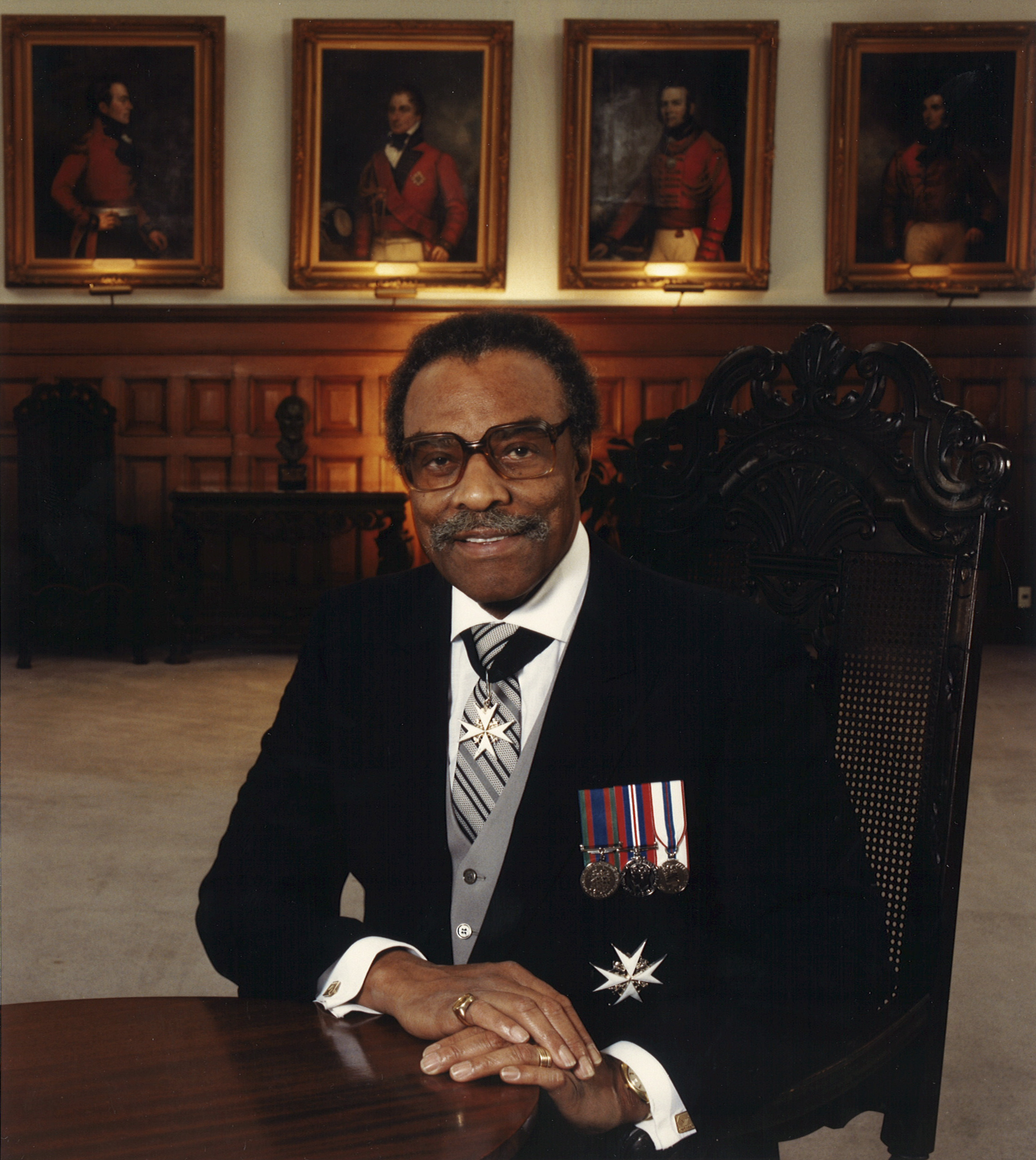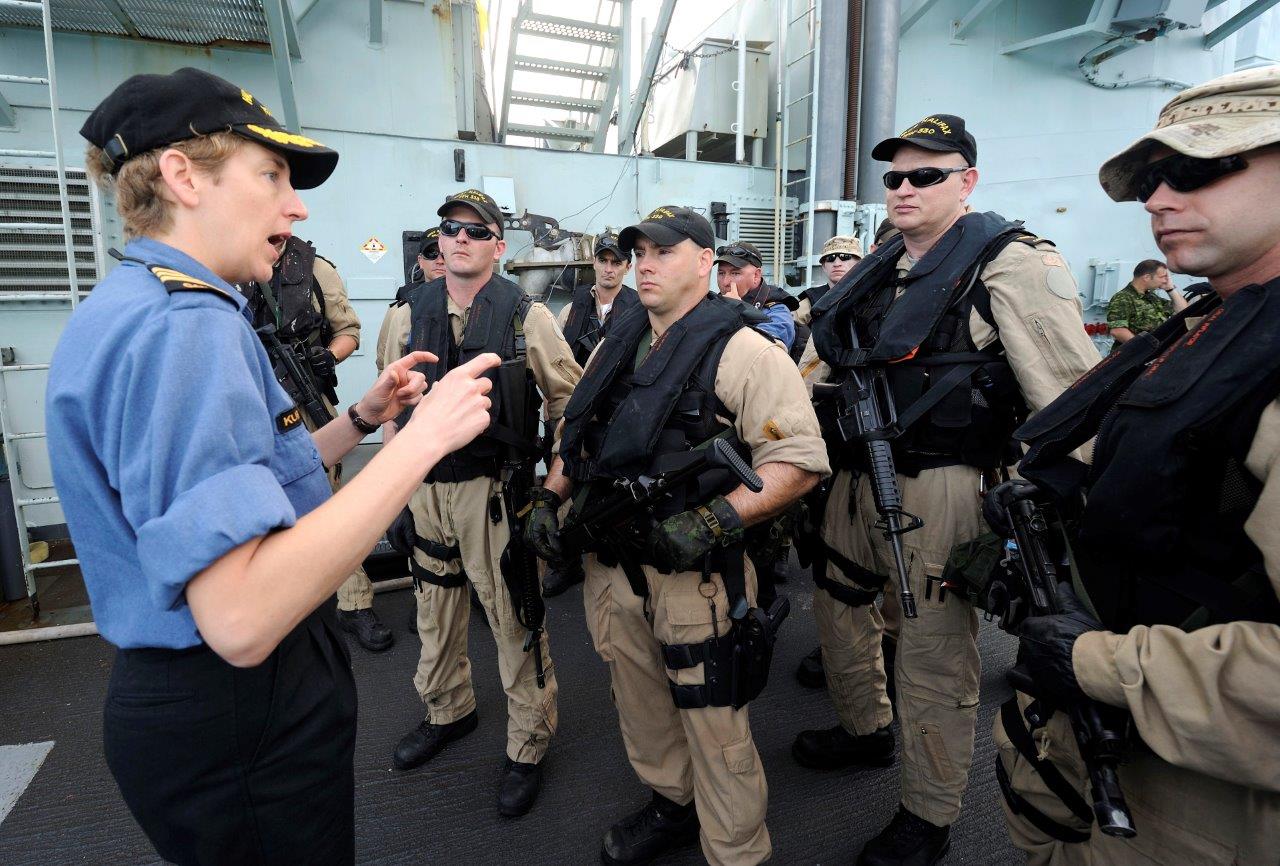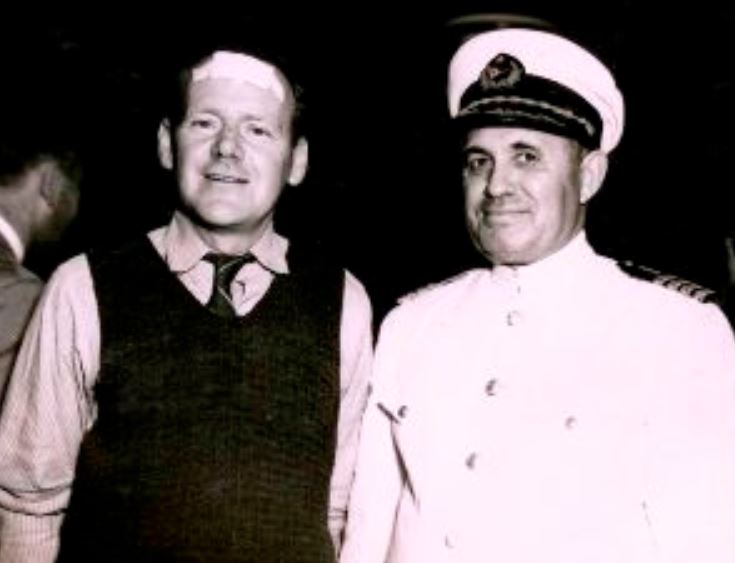Canada Remembers Times - 2019 Edition - Page 4
A high-flying career!
Chris Hadfield posing in front of a CF-18 jet in 1986.
Photo courtesy of Chris Hadfield
Perhaps you have heard of Chris Hadfield. He has written children’s books, recorded music videos in space, sang songs streamed into classrooms from orbit and given many inspirational speeches. Hadfield became the first Canadian Commander of the International Space Station in 2013, but did you know he was also a fighter pilot?
Hadfield was born in Sarnia, Ontario. As a boy, he showed an interest in flying and dreamed of becoming an astronaut. He earned his pilot license as a member of the Air Cadets during his high school years. Hadfield then joined the Canadian Armed Forces, earning a degree in mechanical engineering from the Royal Military College in Kingston, Ontario. He went on to complete air force flight training and eventually became an elite pilot.
Hadfield flew in many missions and even became the first CF-18 pilot to intercept a Soviet bomber in the Canadian Arctic. He retired from the Canadian Armed Forces after 25 years of military service, but that was not the end of his time in the air. He would travel to outer space three times, becoming the first Canadian astronaut to operate the Canadarm in orbit, as well as the first to perform a spacewalk. He returned to Earth to stay in 2013, boots on the ground after a high-flying career.
Did you know?
Many groups from Canada’s diverse society came together to fight in the cause of peace and freedom during the Second World War. More than 17,000 members of our country’s Jewish community would serve with distinction in the army, navy and air force during the 1939 – 1945 conflict. Nearly 450 of them lost their lives. Learn more about their contributions and sacrifices by visiting “Jewish Canadians in the Second World War”.
The sky is no limit
Lincoln Alexander during his time as Lieutenant Governor of Ontario.
Photo: Office of the Lieutenant Governor of Ontario
Lincoln Alexander was born on 21 January 1922, in Toronto, Ontario. He grew up during an era when being a person of colour meant often facing great discrimination. A determined young man, he decided to join the Royal Canadian Air Force when he was 20 years old, one of only a few dozen Black Canadians who would be accepted in our country’s air force during the Second World War. Corporal Alexander trained as a wireless operator in Ontario and Quebec, before serving at a British Commonwealth Air Training Plan base in Manitoba.
After the war, Alexander studied history and law at university. He would be a trailblazer in many ways, becoming the first Black Canadian to be elected to the House of Commons and the first to serve as a minister in the federal cabinet. A highlight of his impressive political career was when he was appointed Lieutenant Governor of Ontario in 1985.
“Linc,” as he was affectionately nicknamed, promoted equal rights and was very supportive of education all his life. He received many accolades for his impressive achievements. Alexander passed away in 2012. January 21 is now celebrated as Lincoln Alexander Day in Canada, in recognition of his exemplary service to our country. A new generation of youth is also being inspired to expand their horizons at the 876 Lincoln Alexander Royal Canadian Air Cadet Squadron in Toronto. With such a great role model, the sky is no limit.
Taking the helm
Commander Josée Kurtz talking to some
of her crew near Haiti in 2010.
Photo: Department of National Defence IS2010-6579-05
Women have played an important role in Canada’s military history over the years. Initially, women in the Royal Canadian Navy were only permitted to serve in support roles on shore. However, in more recent decades women like Josée Kurtz would help change the tides for our female sailors.
Born in Joliette, Quebec, Kurtz joined the Canadian Armed Forces in 1988 knowing that she was entering what was then a very male-dominated profession. Yet, through her hard work and determination, she made history and became a role model.
Kurtz served on various ships throughout her career, training in navigation, weapon systems and combat duties. She was the second in command on HMCS Ville de Québec, taking part in missions like helping deliver much-needed food supplies to Somalia in 2008. The following year, she was appointed Commanding Officer of the frigate HMCS Halifax, fulfilling a career-long dream and making her the first woman to take charge of a major Canadian warship. A highlight of her command was when her ship was deployed on a humanitarian assistance and disaster relief mission to Haiti, following the devastating January 2010 earthquake. Through shifting currents, she helped charter a new course for all Canadian female service members.
Torpedoed twice
Percy Kelly (left) with Captain Nels Helgesen after the sinking of the SS Lady Hawkins.
Photo: George Metcalf Archival
Collection CWM 20040004-005_43
During the Second World War, some 12,000 Canadians sailed with the Merchant Navy, risking their lives to transport supplies for the war effort. Extreme weather and accidents were a constant threat but enemy action is what caused the most losses. German submarines, called U-boats, were very active in the Atlantic Ocean. On January 19, 1942, the Canadian transport vessel SS Lady Hawkins, carrying passengers and cargo, was hit by torpedoes and sank within 30 minutes, claiming 250 lives. Only one lifeboat was able to escape, with some 75 people. It took five days, but the survivors were finally rescued. Many explained that they survived because Chief Officer Percy Kelly was able to keep them calm and took care of distributing the scarce food rations.
The old saying “lightning never strikes twice” did not apply to Percy Kelly. While he was captain of the SS Lady Drake, his vessel was again sunk by a U-boat on May 5, 1942, killing 12 people. The 256 survivors were picked up two days later. Again, Captain Kelly was key in keeping everyone calm. For his courage, he was named a Member of the Order of the British Empire. In two sinkings, he had helped save hundreds of lives, but sadly more than 1,600 Canadians who served in the Merchant Navy died during the war.
Did you know?
Men and women who serve their country in the military often face great challenges. Injuries to body and mind are common and can greatly affect them and their families. To help lift the spirits of these wounded warriors, Prince Harry inspired the creation of the Invictus Games, a special international sport competition. Canadians have taken part in these games since they began in London, England, in 2014. To watch interviews with Canadians who competed, search for “Invictus” on our website.
Word game

- Date modified:



